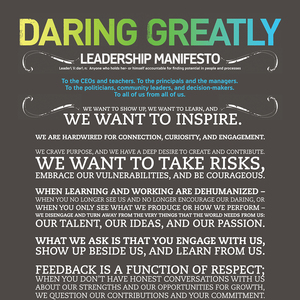I was listening to a friend speak of her recent trip to walk the Great Wall of China for charity. Of the many stories that she shared (and the amazing photos), one stood out for me… Her charity walk was with a group of work colleagues from around the world. One part of the business had a number of people represented, from the most senior leader down. This particular leader suffered from extreme vertigo (dizziness at heights). And of course, the Great Wall has large tracks that are extremely high. At several points, this leader was so affected by his vertigo that he was reduced to crawling on his hands and knees in order to move forward.
This story stood out for me, because so often we hear of leaders who feel that they need to present a persona that is tough and feel that showing vulnerability is a weakness. This leader would have been well aware of the likelihood of what was to happen when he started walking at the greater heights, and yet, he did it anyway. Now the interesting thing about this story is that I guarantee that it is being shared in a positive way. I guarantee that his willingness to be vulnerable has increased trust with his team rather than created any sense of “gosh he was a wuss”.
So, the one (easy) way that a leader can create trust? Be themselves. Be real. Don’t hide behind a facade.
Experiencing trustworthy leadership
This story is borne out by recent research from the CIPD and the University of Bath titled “Experiencing trustworthy leadership“. The report (well worth a read), has this to say on vulnerability and how it affects trust:
“..One final theme describes how trustworthy leadership is experienced by followers who feel that their leaders are ‘real people’, who do not hide behind a veil but share their personal background, values and what is important to them as well as their vulnerabilities with their followers:
‘I find that leadership can often be just a veil that people hide behind, and people don’t want to show vulnerability or weakness or they have shown than they made a mistake it is seen as a pure weakness, you can be a successful leader with a different approach and actually be even more positive because you create that greater trusted sort of relationship’.
There were many stories shared which further exemplified the importance of engaging with real people. For example, one participant described a time when his leader gave a speech in front of an audience in which she shared her aspirations and ‘what it meant to her’. She even expressed an emotional side, which previously had remained hidden. Why was this important for trust to flourish? Because it showed a vulnerability which had not been there before. Because by delivering the speech in this particular way, she allowed others around her to become part of her personal space. Because it made them feel connected to her at a personal level. All of this allowed the real person to emerge, which in turn created a willingness to trust among her followers.”
There’s another story of the leader of a marketing team who had her whole team undergo a 360 degree feedback process. The day came for the team to share their results with each other, only to discover that everyone had undertaken the process except the leader herself. She was so scared of putting herself out there, and being vulnerable, that she manufactured an (implausible) reason why she had not been part of the process. The result — a huge decrease in the amount of trust between her and her team.
Brene Brown’s take on ways that leaders can create trust

If you have been reading this blog for a while, you’ll know that I am a big fan of Brene Brown. One of her key findings is that vulnerability, once thought to be a weakness, is actually now being found to be opposite — a strength rather than a weakness. I have reproduced again her leadership manifesto (with thanks to Brene Brown) as it has some useful reminders about how vulnerability is actually a good thing.
So, the one thing that a leader can do to create trust.. Just be themselves.
Until next week, happy reading.

Ps. Did you read last week’s blog on whether coaching could improve your work performance?

